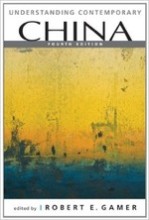Summary: 1. News Values | Lippmann
- This + 400k other summaries
- A unique study and practice tool
- Never study anything twice again
- Get the grades you hope for
- 100% sure, 100% understanding
Read the summary and the most important questions on 1. News values | Lippmann
-
1 News Values
This is a preview. There are 26 more flashcards available for chapter 1
Show more cards here -
News factors (Lippmann)
characteristics of news stories about events and topics that contribute to making them newsworthy
-
Nature of news (Lippmann)
before a series of events become news they have usually to make themselves noticeable
-
Agenda Setting (Lippmann)
The ability to tell us what issues are important.
-
News factors according to Eilders
world events (news factors) exert mainly an indirect influence on personal images; influence is mediated by media images (prominence in media).
-
Event characteristics or characteristics of reality construction by journalists? (Eilders)
As journalists are the most important selective agents, their perception should be critical
to the definition of news factors.
-
Frequency (News factors according to Galtung & Ruge)
Events that occur suddenly and fit well with the news organization's schedule are more likely to be reported than those that occur gradually or at inconvenient times of day or night. Long-term trends are not likely to receive much coverage. -
Unexpectedness (News factors according to Galtung & Ruge)
If an event is out of the ordinary it will have a greater effect than something that is an everyday occurrence. -
Unambiguity (News factors according to Galtung & Ruge)
Events whose implications are clear make for better copy than those that are open to more than one interpretation, or where any understanding of the implications depends on first understanding the complex background in which the events take place. -
Personalization (News factors according to Galtung & Ruge)
Events that can be portrayed as the actions of individuals will be more attractive than one in which there is no such "human interest." -
Meaningfulness (News factors according to Galtung & Ruge)
This relates to the sense of identification the audience has with the topic. "Cultural proximity" is a factor here -- stories concerned with people who speak the same language, look the same, and share the preoccupations as the audience receive more coverage than those concerned with people who speak different languages, look different and have different preoccupations.
- Higher grades + faster learning
- Never study anything twice
- 100% sure, 100% understanding






























